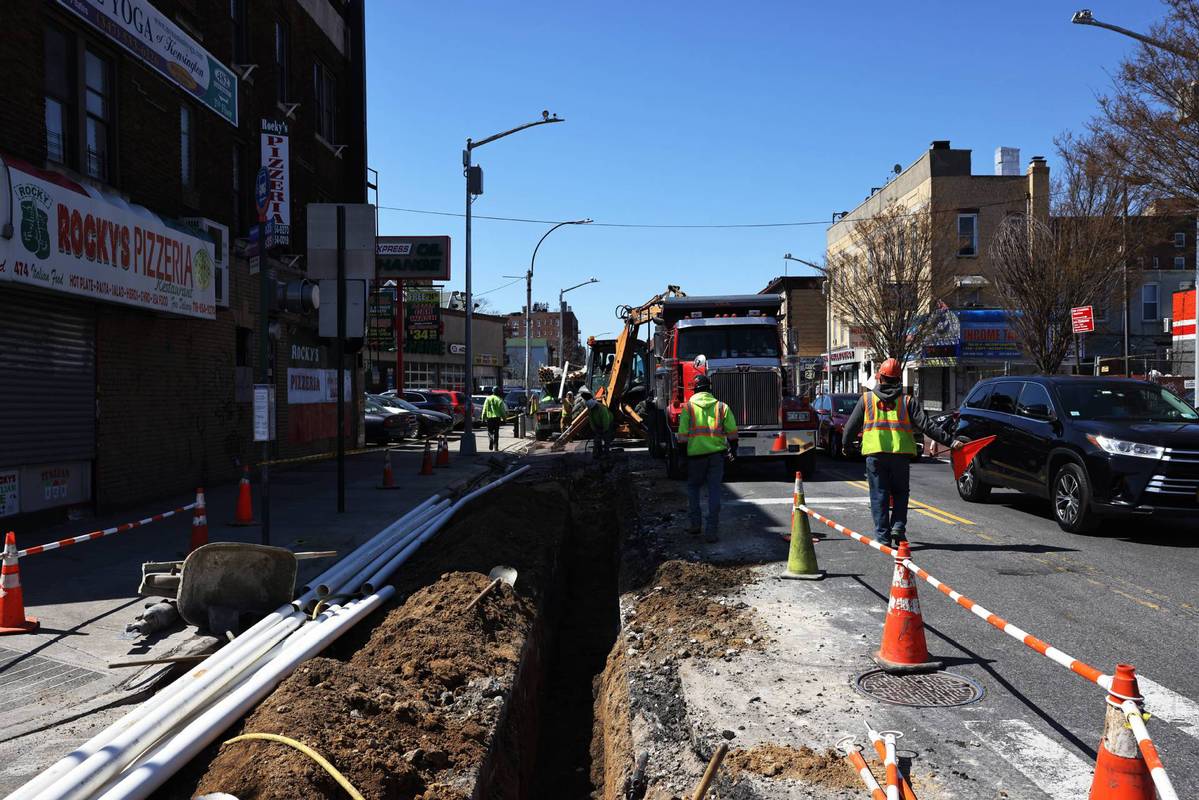Biden's new stimulus plan is all about infrastructure, and China has lessons to share
Updated: 2021-05-01 11:11

The US is taking a page out of China's economic playbook to boost the pandemic-hit country's economy and put it in a better position to compete with China, said an article pulished on the South China Morning Post on Monday.
US President Joe Biden is betting that his US$2.25 trillion economic stimulus plan centred on infrastructure spending will boost the coronavirus-hit American economy and put it in a better position to compete with China.
But when it comes to repairing and building roads, railways and other forms of mass transit, there are distinct differences in how the US and China approach infrastructure spending.
First and foremost, the US cannot copy China's top-down approach to economic planning and management, which has allowed Beijing to control the coronavirus at home while making and implementing infrastructure spending decisions quickly.
"China has institutional advantages," said Professor Liu Yipeng at the University of Reading's Henley Business School in the UK, referring to the differences in the two political systems when it comes to controlling the spread of the pandemic.
"There's a real trade-off. If you don't control the coronavirus well, and you want to reboot the economy, there's always the danger of the coronavirus coming back. You'll basically get hurt again."
"Second is the much slower implementation time. When Beijing decides to invest, the money reaches the real economy fairly quickly. Local governments have projects ready for investment and are heavily incentivised to start spending quickly.
"In America it could take several years for spending to take effect, blunting its impact as a countercyclical policy tool."
For the last two decades, spending on infrastructure has been China's go-to method to combat economic slowdowns while supporting long-term development.
Last year, to cushion the blow that the pandemic had on its economy, Beijing lifted its fiscal-deficit level to a record high and allowed local governments to borrow at record levels to fund infrastructure spending.
China's public sector debt jumped to 46.55 trillion yuan (US$7.17 trillion), including 20.89 trillion yuan owed by the central government and 25.66 trillion yuan owed by local authorities.
China's overall debt-to-GDP ratio rose to 270.1 per cent last year from 246.5 per cent in 2019, according to figures from National Institution for Finance & Development.
The spending helped China's economy grow by 2.3 per cent in 2020, in a dramatic turnaround from the economic damage caused by the pandemic in the early part of the year.
"It [infrastructure investment] has been a highly successful tool [for China] to stabilise economic activity during growth downturns," Green said.
"In the China context – post-global financial crisis [in 2008] and [following the stock market crash] in 2015 – infrastructure spending and soft budget constraints for local governments was a good policy response.
"The problems came when Beijing was unable or unwilling to tighten credit and budget constraints."
With the coronavirus still a threat to the US economic recovery, the Biden administration has proposed a domestic infrastructure initiative.
This includes upgrading ageing bridges, roads, railways, airports and urban transit systems, while also expanding and improving the country's digital infrastructure, in a bid to support the economy and contend with growing competition with China.
Congressional approval of the plan is still needed, so its details could change somewhat from their current form.
Most analysts believe that Biden's plan is necessary and likely to be effective in stimulating the US economy because of the country's years-long underinvestment in infrastructure, with spending averaging around 2.4 per cent of its gross domestic product (GDP) since 2010 – well below China's 8 per cent – according to figures from the Council on Foreign Relations think tank.
To be most effective, analysts say, Biden's plan should focus on building quality infrastructure projects that support overall future economic development, and the creation of new jobs should be a by-product of those projects, not a primary goal in itself.
"In principle, the US's infrastructure is in need of an upgrade. Thus, in principle, an infrastructure package could have a positive impact on the economy," said Louis Kuijs, head of Asia Economics at Oxford Economics.
"But the key objective should be to generate good economic returns, in the sense of building infrastructure that serves the economy. Having job creation as an objective could limit the usefulness and effectiveness of the infrastructure development."
Despite some well-publicized failures, China has done a good job of building the infrastructure needed to support its economic development.
"In my view, China's infrastructure investment in recent decades has, overall, served the economy well," Kuijs said.
"Despite stories about the occasional 'white elephant' project, the bulk of the infrastructure tends to be used actively, thereby generating solid economic returns. I think there are airports in China where the economic return is pretty poor. But the high-speed railway network? Very much worth it."
China and the US are also in different stages of their economic development, with different objectives for infrastructure spending.
China is in the midst of an urbanisation push, looking to move more of its rural residents into large, developed cities.
This means there is greater demand than in the US for new transport that connects low-cost labour and resources from rural areas with more industrialised cities, according to an analysis published last week by SWS Research in Shanghai.
"At this stage, the level of China's infrastructure is higher than the level of manufacturing development. The impact of infrastructure on China's economy is to promote the flow of people and to accelerate the increase in demand, thereby stimulating the supply of manufacturing," SWS Research said.
The World Bank, which has financed parts of six high-speed rail projects in China, said in a 2019 study that four of the completed projects were producing positive economic returns, giving the investment an estimated economic rate of return of 8 per cent – "a good result for such a large investment".
The projects include the 856km (532-mile) Guizhou-Guangzhou high-speed railway network with a price tag of more than 90 billion yuan (US$14 billion), built between 2008 and 2014.
By spending more to improve infrastructure in the US, Biden's proposal also aims to reduce production costs, revitalise American manufacturing, create jobs and strengthen supply chains by seeking to address a lack of skilled workers to fill jobs in the manufacturing sector, much of which has been outsourced to developing countries such as China that have lower labour costs.
But China's infrastructure-driven approach to economic planning has not prevented a decline in manufacturing investment, resulting in fewer jobs in the sector as rising labour costs have driven out many exporters.
The proportion of workers employed in manufacturing and construction has fallen steadily, from 30.3 per cent in 2012 to 27.5 per cent in 2020. And weak growth in consumer demand is said to be holding back China's economic power in the long term.
South China Morning Post
























